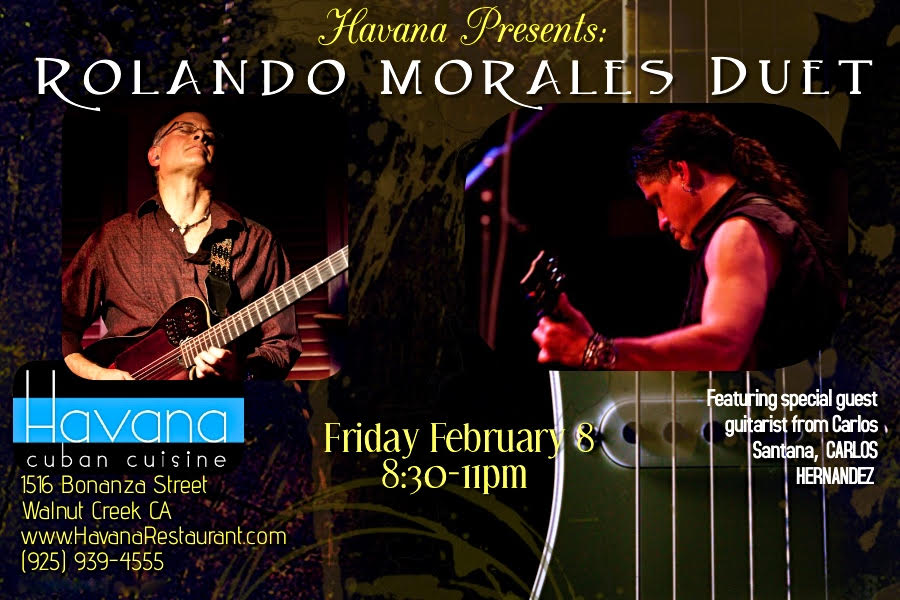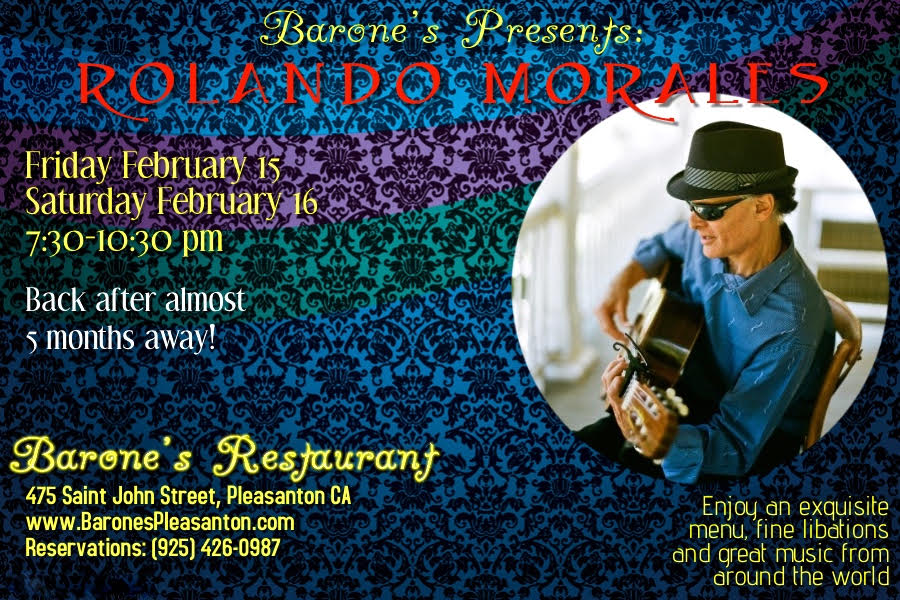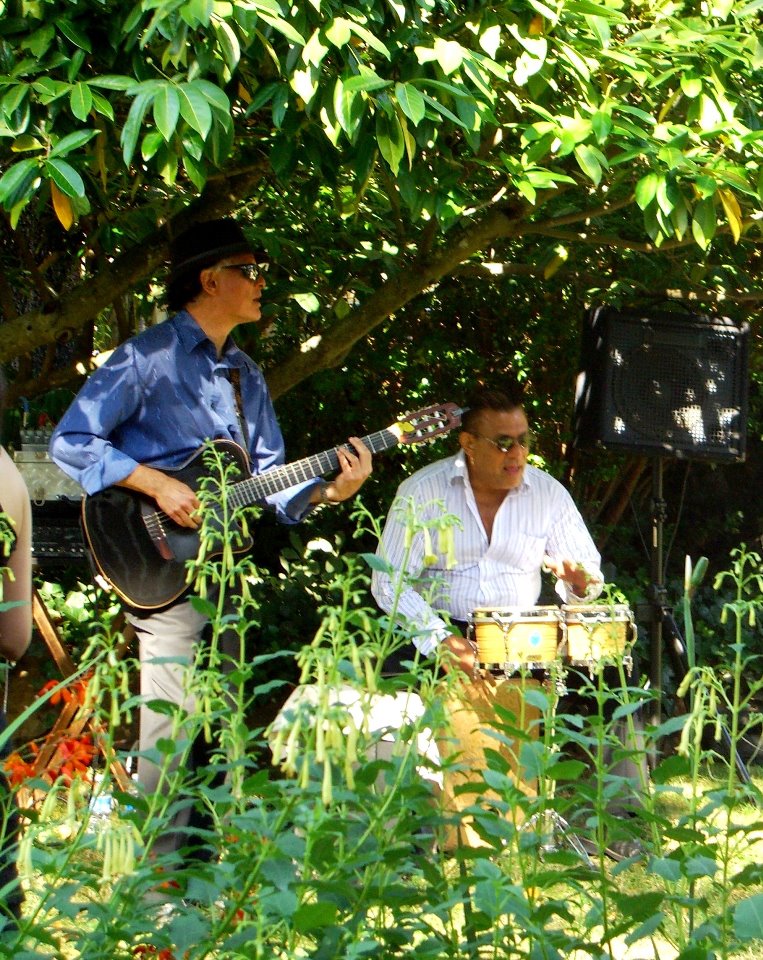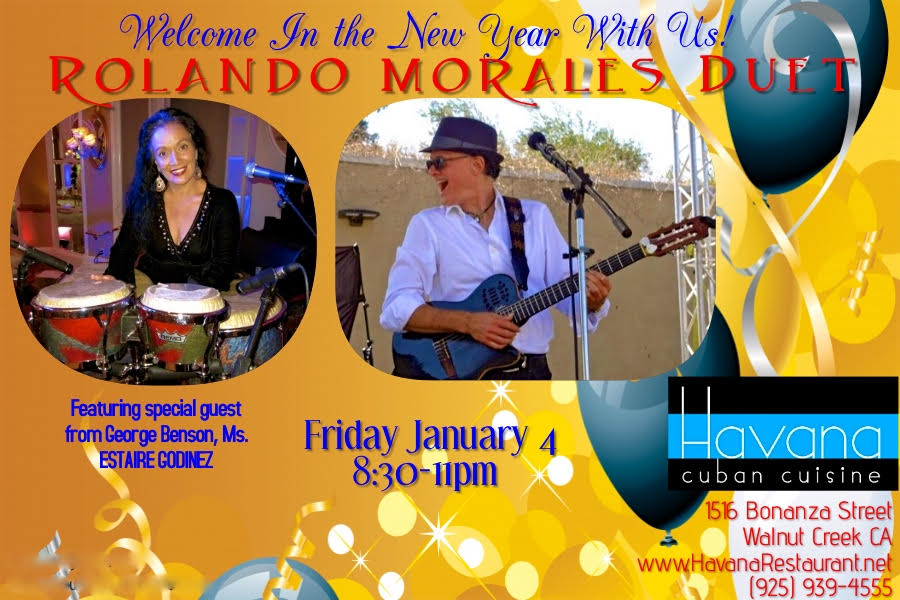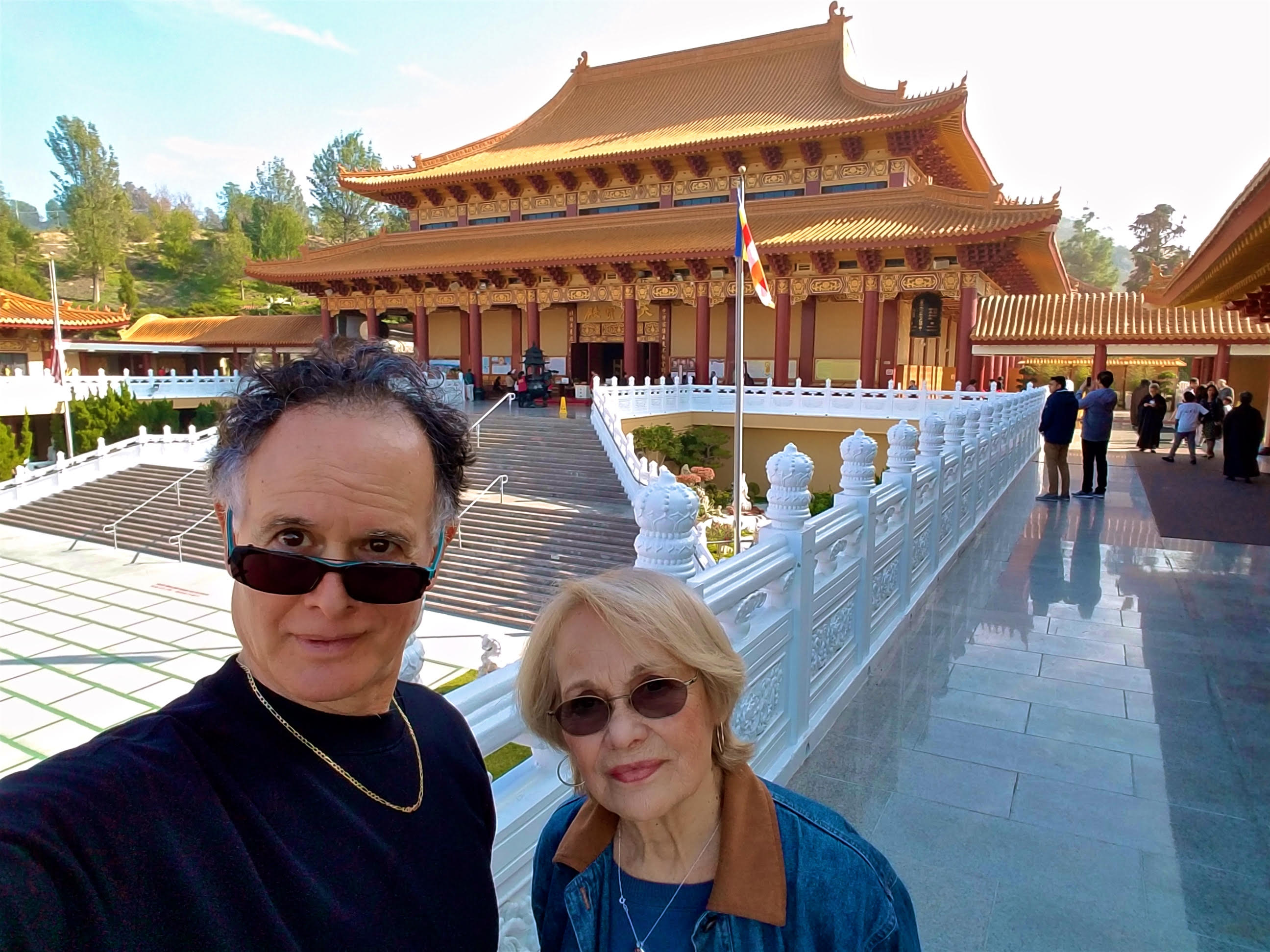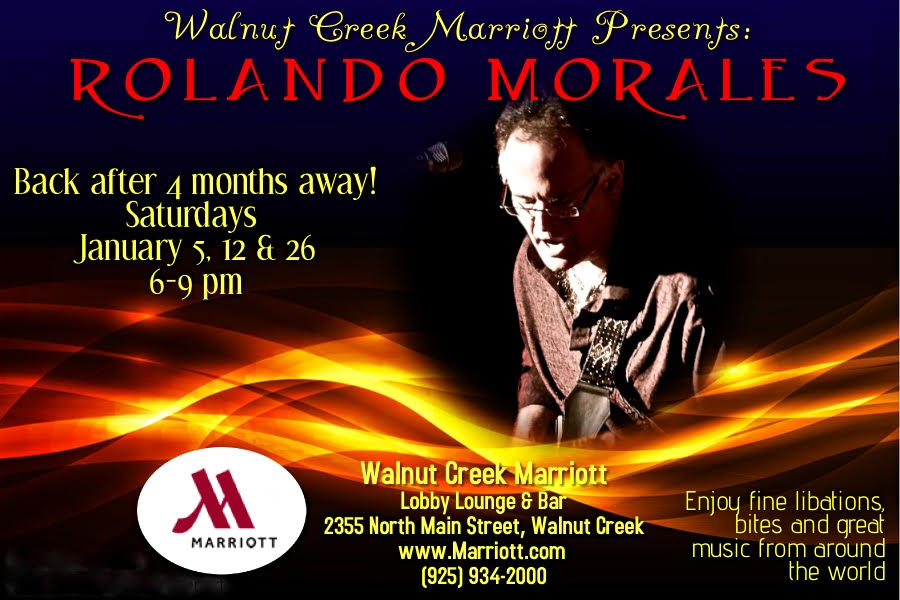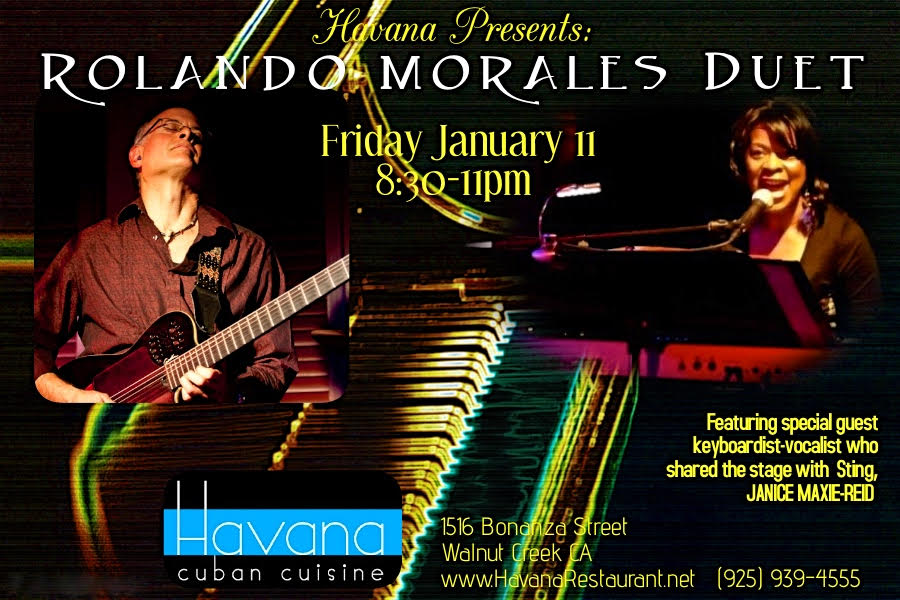Friday March 1, Havana Cuban Cuisine, 1516 Bonanza St., Walnut Creek, approx 8:30-11pm. Rolando returns to this fine Cuban restaurant and live music venue. Tonight Rolando welcomes for a rare Havana appearance, the thrilling violinist-bassist from Paraguay, the great Carlos Reyes. Hehas played with Grammy winner Arturo Sandoval, Steve Miller and the Doobie Brothers, among others. And on guitar, voice and his pedal board of magic, Rolando Morales. Together, they create fire, a huge sound and unique energy you do not want to miss! www.havanarestaurant.net, (925) 939-4555.
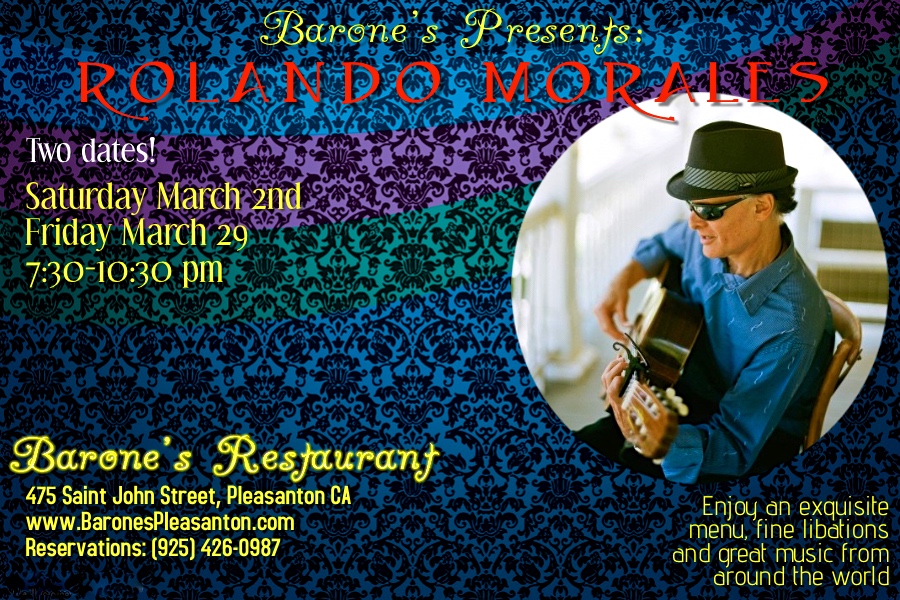
Saturday March 2, Barone’s Restaurant, 475 St. John St., Pleasanton CA, approx 7:30-10:30pm. After almost 5 months away, Rolando returns to one of Pleasanton’s premiere dining establishments. Enjoy exquisite meals and service, libations and Rolando’s vast repertoire in the lively Cocktail Lounge. See www.baronespleasanton.com, (925) 426-0987.
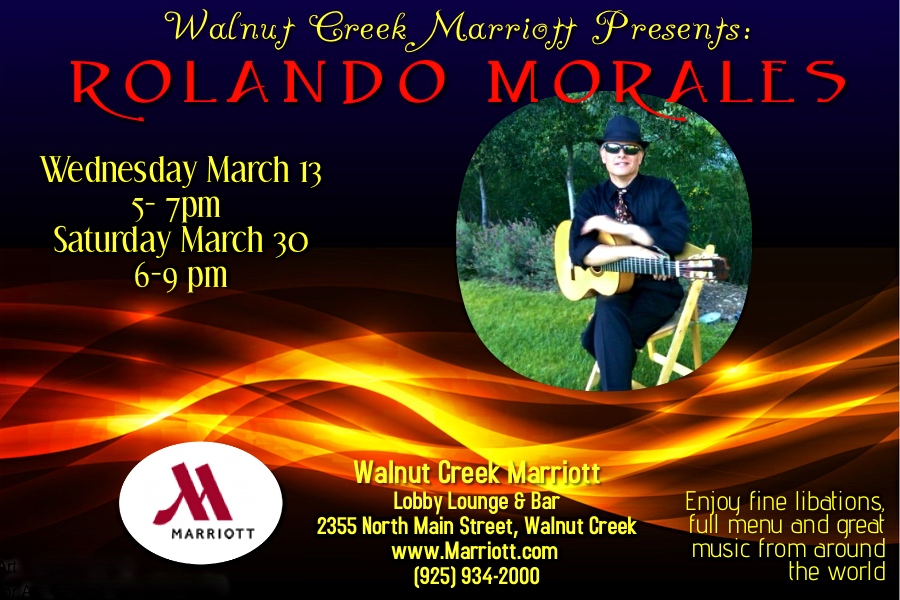
Wednesday March 13, Walnut Creek Marriott, Lobby Lounge & Bar, 2355 North Main Street, Walnut Creek, 5-7pm. Rolando returns to this redesigned East Bay hotel and gathering spot in the newly renovated lounge in the shadow of Mount Diablo, where you can enjoy your favorite cocktail, fine wines and a lovely full menu. Enjoy a sophisticated environment with an international clientele and great acoustics, perfect for Rolando’s vast repertoire on solo guitar and voice to celebrate your hump day. Reservations: (925) 934-2000, https://www.marriott.com/hotels/travel/oakwc-walnut-creek-marriott/.
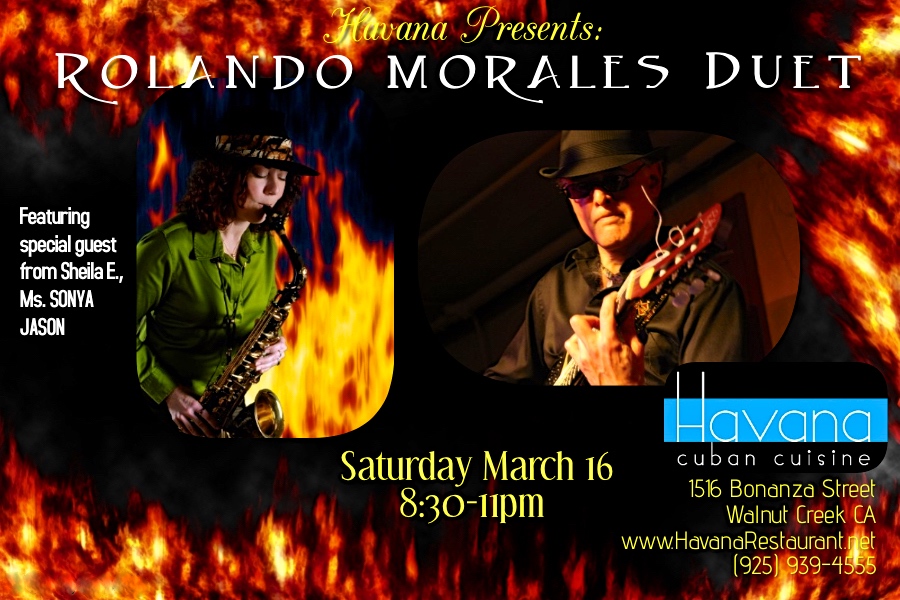
Saturday March 16, Havana Cuban Cuisine, 1516 Bonanza St., Walnut Creek, approx 8:30-11pm. Rolando returns for this special series of duet engagements at this fine Cuban restaurant and live music venue. Tonight will feature the saxophonist who has played with Sheila E. and the Brothers Johnson, the delightful Sonya Jason; and on guitar, vocals and his pedal board of magic, Rolando Morales. They’ll break out their Latin jazz and classic fusion repertoire and groove big all night long. It’s rare when Sonya can make it to this venue, so don’t miss it! www.havanarestaurant.net, (925) 939-4555.
Friday March 29, Barone’s Restaurant, 475 St. John St., Pleasanton CA, approx 7:30-10:30pm. Rolando returns to one of Pleasanton’s premiere dining establishments. Enjoy exquisite meals and service, libations and Rolando’s vast repertoire in the Cocktail Lounge. Reserve at www.baronespleasanton.com, (925) 426-0987.
Saturday March 30, Walnut Creek Marriott, Lobby Lounge & Bar, 2355 North Main Street, Walnut Creek, 6-9pm. Rolando returns to this redesigned East Bay hotel and gathering spot in the newly renovated lounge in the shadow of Mount Diablo, where you can enjoy your favorite cocktail, fine wines and a lovely full menu. Enjoy a sophisticated environment with an international clientele and great acoustics, perfect for Rolando’s vast repertoire on solo guitar and voice and your wonderful night out. Reservations: (925) 934-2000, https://www.marriott.com/hotels/travel/oakwc-walnut-creek-marriott/.
CD SALES
If you would like to order a CD, read on. If you’d like to order our CD “Rolando Y Qué?!”, you can pick it up at my website, the gigs or by mail. They’re $15.00 at the gigs, or $17.00 by mail to cover postage and handling. TO ORDER THE NEWEST CD “ROLANDO, Y QUÉ?!” by mail: Send a check or money order payable to Rolando Morales for $17.00 for the CD and postage to Rolando Morales, 9028 Burr Street, Oakland, CA 94605. and I’ll send it to you. Let me know if you’d like .it signed.
TO ORDER THE ORIGINAL “PASSPORT: 10th ANNIVERSARY EDITION” CD by mail, send $17.00 to the same address as above. Be sure to include your return address.
BOTH CDs ARE AVAILABLE FOR PURCHASE AT WWW.ROLANDOMORALES.COM
All other shows are private. Why not hire Rolando for your own private event? He’s available for corporate shows, weddings, parties, concerts and festivals. The Rolando Morales Group is available as sextet, quintet, quartet, trio and duo depending on your entertainment needs and budget.
This email was sent to you for Rolando Morales: RMG, 9028 Burr Street, Oakland, CA 94605
Unsubscribe
RioVida Networks Public Relations
This email message may contain an advertisement or solicitation.
